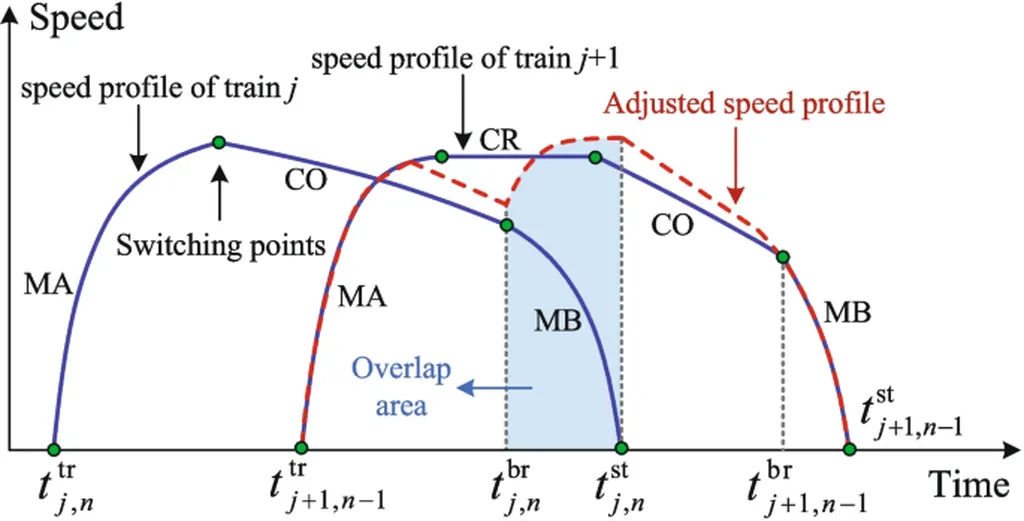In the quest to optimize freight train operations, a novel algorithm has emerged that promises to reduce driver workload and boost energy efficiency. Developed by lead author ZHU Yuqing, this real-time speed profile planning algorithm leverages neural networks to guide freight train drivers, potentially revolutionizing the energy sector’s approach to rail transportation.
The algorithm, detailed in a recent study published in *Kongzhi Yu Xinxi Jishu* (translated as *Control and Intelligent Technology*), addresses a critical need in the industry: improving transportation efficiency while reducing operational complexity. By analyzing optimization results from quadratic programming, the algorithm determines the input and output forms of a neural network model. This model is then trained using a vast dataset of optimization results, enabling it to predict optimal speed profiles in real-time.
“Our goal was to create a system that could not only reduce the cognitive load on drivers but also enhance energy savings,” said ZHU Yuqing. “The results have been promising, with a significant reduction in energy consumption compared to traditional methods.”
The algorithm’s effectiveness was validated through both virtual simulations and real-world tests. Remarkably, the speed profiles generated by the algorithm matched those produced by offline global planning algorithms based on quadratic programming, all while meeting real-time calculation requirements. The energy-saving rate achieved was an impressive 5.98% compared to the operations of experienced drivers.
The commercial implications for the energy sector are substantial. Freight trains are a backbone of global logistics, and any improvement in energy efficiency can lead to considerable cost savings and reduced environmental impact. As the world increasingly focuses on sustainability, innovations like this algorithm could play a pivotal role in shaping the future of freight transportation.
“This research opens up new possibilities for integrating advanced technologies into traditional industries,” said ZHU Yuqing. “By combining neural networks with real-time data, we can achieve levels of efficiency that were previously unattainable.”
The study’s findings suggest that the algorithm could be a game-changer for the rail industry, offering a scalable solution that can be adapted to various operational contexts. As the technology matures, it may pave the way for broader applications in other sectors, further driving the adoption of intelligent systems in everyday operations.
In the rapidly evolving landscape of transportation and energy, this research stands out as a beacon of innovation, highlighting the potential of neural networks to transform traditional industries. As the world continues to seek sustainable and efficient solutions, the insights gained from this study could well be the catalyst for a new era in freight train operations.

